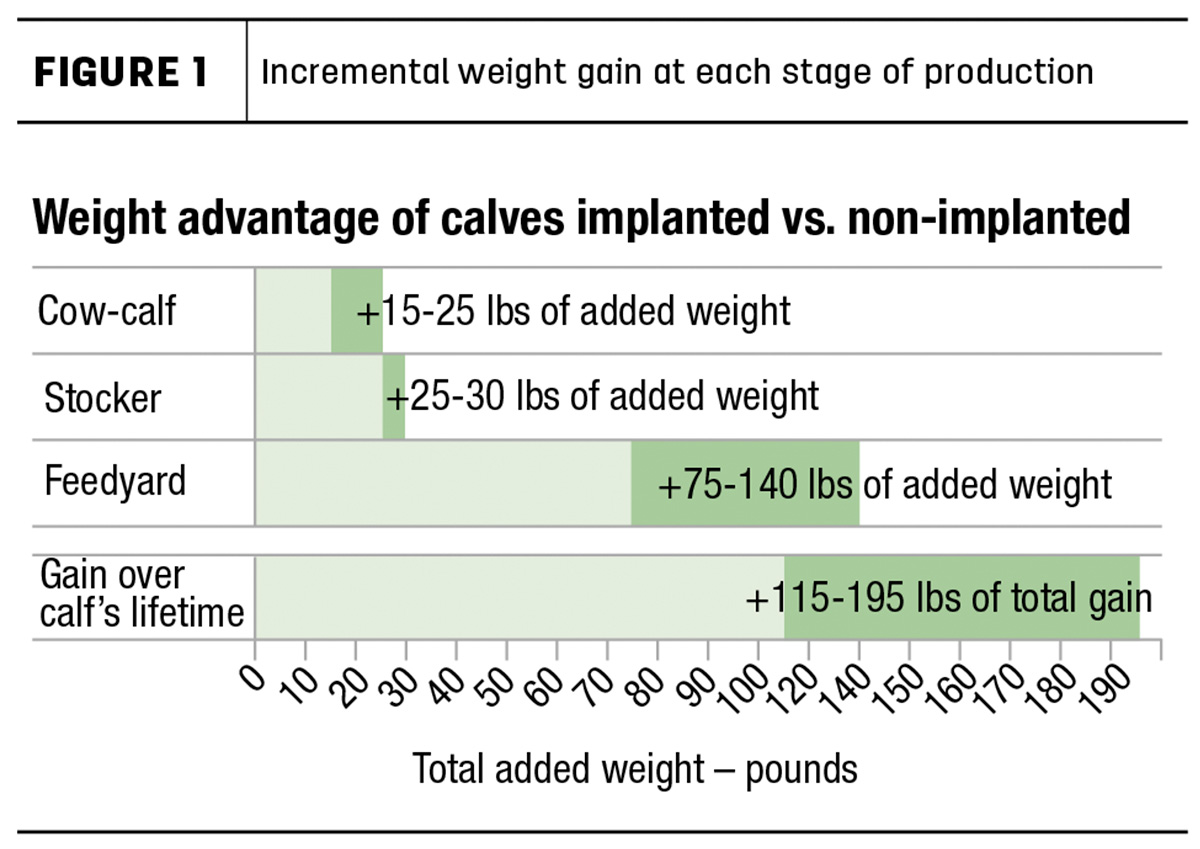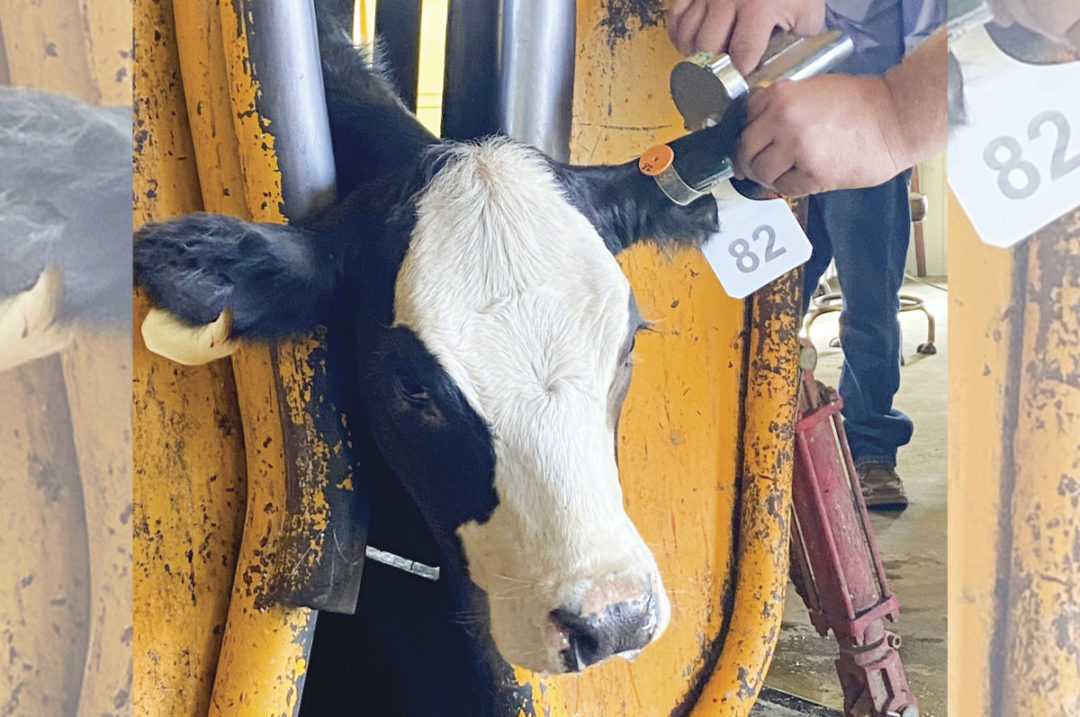In many areas, it is weaning time. If you are looking for ways to maximize the value of your calves, implanting should be considered as part of your herd management program. Growth-promoting implants are proven to improve feed efficiency and weight gain, and to more effectively increase growth rate and protein deposition.
For an investment of approximately $1.50 per head, implanting results in a $30-$40 increase in calf value in today’s market. Not only is the cost to produce beef reduced, but calves also have no loss of subsequent performance in later production phases.
Here are some of the key benefits of implanting calves.
Improved average daily gain (ADG)
Implanting suckling calves significantly enhances ADG between branding and weaning, resulting in more salable weight every fall. A 23-trial summary of more than 2,358 suckling calves showed an average weaning weight advantage of 23 pounds in cattle administered an implant.
Research shows that a zeranol implant improves ADG in weaned backgrounding cattle by close to 10%. Assuming cattle gain 2 pounds per day without an implant during a 60-day post-weaning preconditioning period, implanting would improve ADG to 2.2 pounds per day. That equates to 12 additional pounds of weight gain over 60 days.
Long-lasting, additive benefits
When the right implants are used – matching strength of the implant to weight, growth rate and composition of gain – a return on investment (ROI) can be achieved during each phase of production (see Figure 1).

Studies consistently show that producers who implant suckling calves will have a competitive weight advantage with no loss of subsequent performance in later production phases after using a calf implant. One study showed that implanted calves were 19 pounds heavier after the suckling phase and continued to gain more during the growing phase. Cattle implanted at both suckling and growing phases were 40 pounds heavier than calves never receiving an implant.
Another study found cattle implanted across three separate production phases – suckling, growing and finishing – were heavier at finishing than animals receiving an implant only at the start of finishing.
A recent study looked at implant strategy and the rate of gain during the winter backgrounding phase. The results showed that implants had additive effects, increasing animal performance throughout all phases. Providing a zeranol implant during the winter growing phase reduced compensation during the summer grazing phase. Furthermore, an implant strategy and a high rate of gain during winter backgrounding resulted in 75 pounds of additional hot carcass weight.
More revenue on sale day
A study published in 2019 looked at sale prices of beef calf lots enrolled in the non-hormone treated cattle (NHTC) program and those that received implants, sold through 67 summer video auctions from 2010 through 2018. There were 40,941 lots of beef calves used in the analysis.
When comparing NHTC and implanted lots of cattle, the implant status did not result in a price reduction in any year, indicating no price difference between implanted lots and NHTC lots of cattle. The data show that producers can gain more revenue by using implants to market higher-weight calves.
Unless NHTC programs offer a premium that outweighs the productivity and efficiency of gains from implants, calves that are destined for finishing and sale to a terminal market should be implanted.
New FDA guidance
Implanting is both an economic and environmentally sustainable practice that is critical to the cattle industry, allowing the use of fewer resources while enabling a calf to gain anywhere from 115 to 195 pounds of additional weight (over non-implanted calves) over its lifetime. This means economic value by improving margin due to increased gain and decreased cost of gain.
The FDA recently provided new guidance for implant use in cattle. Work with your veterinarian, nutritionist, extension specialist and/or animal health representative to understand these changes and develop a calf implant program that’s optimal for your operation.
References omitted but are available upon request by sending an email to the editor.









